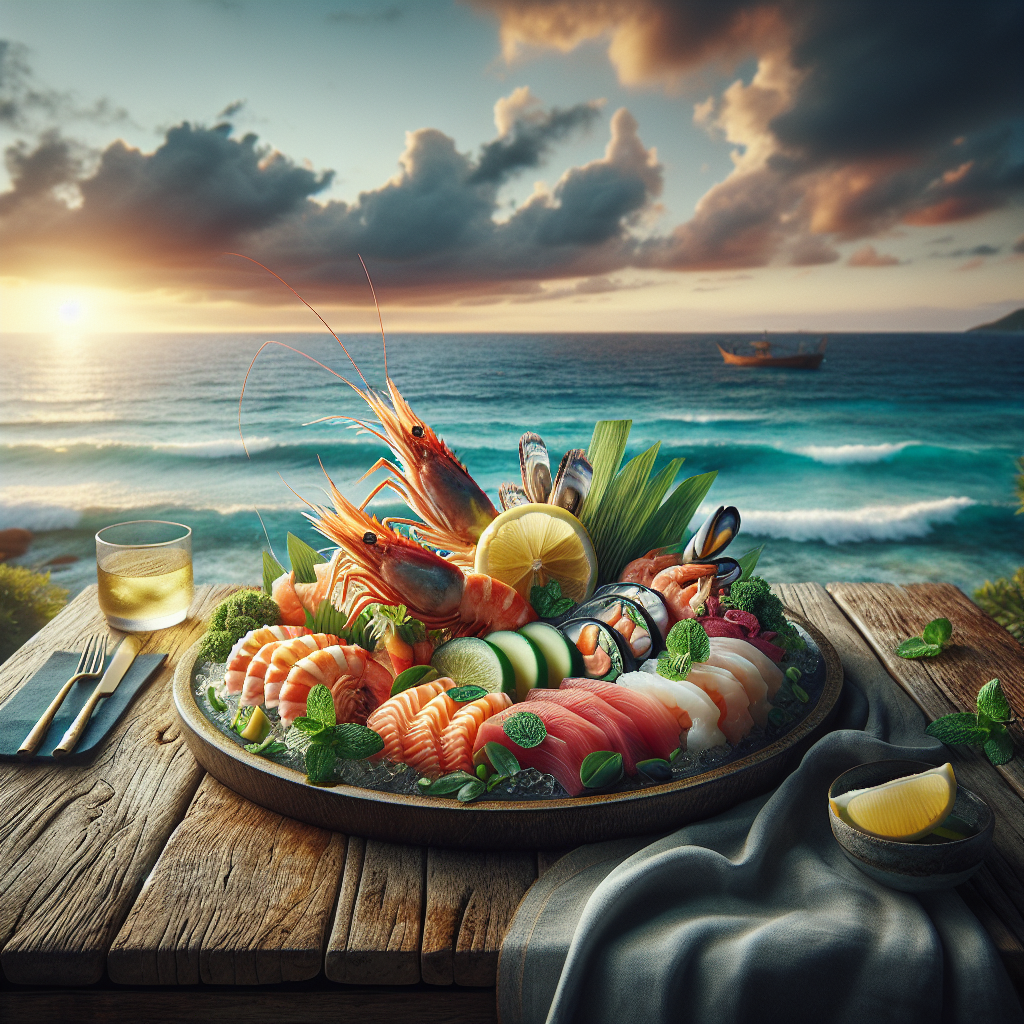
From Ocean to Table: Inside the Freshest Seafood Dining Experience
From Ocean to Table: Inside the Freshest Seafood Dining Experience
In a world where culinary experiences are constantly evolving, there is a growing demand for authenticity and freshness. Nowhere is this trend more pronounced than in the realm of seafood dining, where the journey from ocean to table is being redefined through innovative practices and sustainable methods. Diners are no longer just eating seafood; they are partaking in an experience that begins with the ocean’s bounty and ends with a feast that tantalizes the senses.
A New Standard for Freshness
The term "fresh seafood" is often thrown around, but what does it truly mean? At its core, it suggests seafood that’s been caught and prepared in the shortest possible time, preserving the natural flavors and textures. The movement towards authentic freshness is being championed by a new wave of seafood restaurants dedicated to bridging the gap between ocean and table.
These establishments prioritize daily catches, often working directly with local fishermen to ensure that the seafood is harvested sustainably and delivered as swiftly as possible. This not only reduces the carbon footprint associated with transportation and storage but also guarantees that diners receive the most pristine products available.
The Role of Sustainability
The journey from ocean to table is not just about providing fresh seafood; it’s about ensuring that future generations can enjoy the same. Many eateries are adopting sustainable fishing practices, emphasizing catch limits, seasonal fishing, and ethical treatment of marine life. This commitment to sustainability often involves partnerships with organizations that certify responsible seafood sourcing.
Sustainable methods extend beyond fishing practices. Some restaurants have taken the initiative to farm their seafood, using cutting-edge aquaculture systems designed to mimic natural habitats while alleviating the pressure on wild fish populations. This approach not only meets the ever-increasing demand for seafood but does so in a way that is environmentally conscious.
The Experience
Walking into a seafood restaurant that embraces the ocean to table philosophy is a sensory delight. The air is filled with the subtle scent of the sea, hinting at the freshness of the offerings. Many of these eateries feature open kitchens or fish market-style displays, allowing patrons to witness the selection and preparation of their meals.
Menus change regularly, reflecting the seasonal availability of fish and shellfish. Diners might find themselves enjoying Alaskan halibut in spring or savoring swordfish in the late summer. This dynamic approach not only supports local ecosystems but also introduces guests to a variety of flavors throughout the year.
The culinary techniques employed are often simple, designed to highlight the natural attributes of the seafood. Whether it’s a delicate ceviche, a perfectly seared filet, or oysters shucked to order, the goal is to honor the character of each ingredient.
Education and Engagement
Part of this dining experience is education. Chefs and staff are often eager to share stories about the day’s catch, the fisherman who provided it, and the journey it took to reach the plate. Some restaurants go a step further by hosting cooking classes, offering excursions to fish markets, or even arranging boat trips to watch the fishermen at work. This level of engagement enriches the dining experience, turning a meal into an event steeped in learning and appreciation.
Conclusion
As the ocean to table dining experience continues to grow, it represents more than just a trend—it’s a movement towards consciousness in consumption. At a time when global ecosystems face unprecedented challenges, these restaurants offer a blueprint for a sustainable future where people can enjoy the ocean’s offerings responsibly and deliciously. Whether you’re a seafood aficionado or a casual diner, you’re invited to experience the exceptional journey from ocean to table, where every bite tells a story of care, craft, and commitment to our planet.



